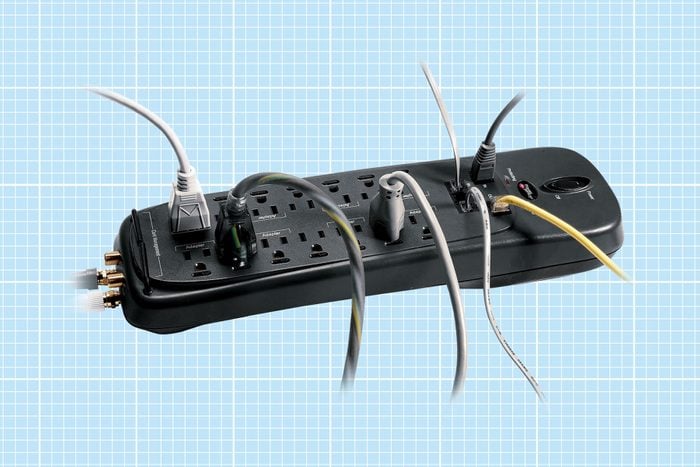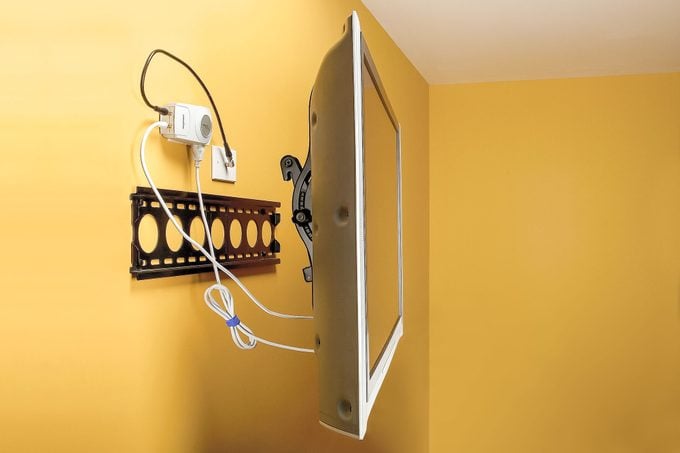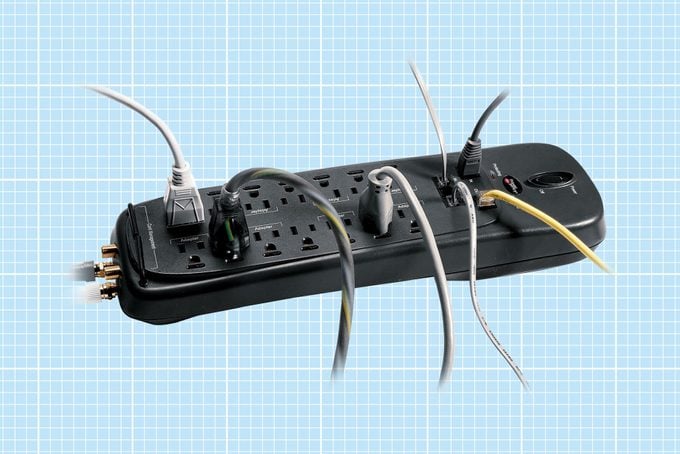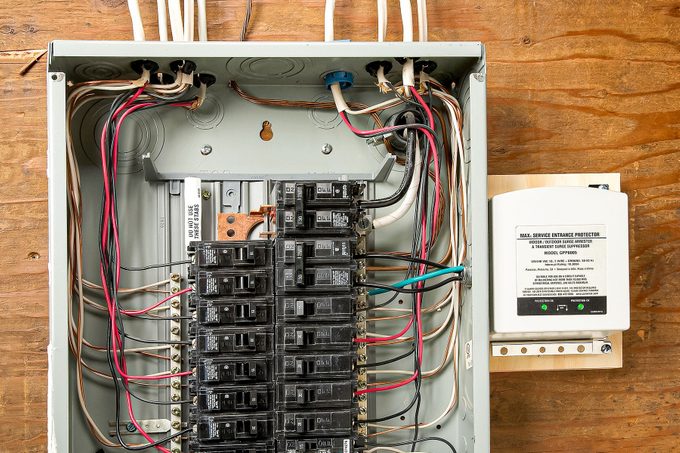How to Use a Surge Protector for Electronic Devices
Updated: Jan. 24, 2024

Learn how to use surge protectors for any electronic device, whether it's a digital clock, a computer, a dishwasher or a home theater system.
On This Page
How Does a Surge Protector Work?
Surge protectors are your electrical system’s first line of defense against voltage spikes, and understanding how they work is crucial for safeguarding your valuable electronics. These devices operate by constantly monitoring the electrical voltage supplied to your appliances and gadgets. When there’s a sudden surge, like during a lightning strike or when power is restored after an outage, surge protectors divert excess voltage away from your equipment. They do this by using a component called a metal oxide varistor (MOV), which can absorb and dissipate the excess electricity safely. In essence, surge protectors act as voltage “traffic cops,” directing dangerous surges away from your devices and ensuring they receive only the clean, stable power they need to function correctly.
How Long Do Surge Protectors Last?
On average, a good surge protector can last anywhere from 3 to 5 years. However, some high-quality models may offer protection for up to a decade or longer. Keep in mind that surge protectors don’t last forever, and they can wear out over time as they divert electrical surges away from your devices. To ensure continued protection, it’s essential to replace your surge protector if it’s taken a significant hit or if it’s been in use for several years. Regularly inspecting your surge protector for any signs of wear or damage and investing in a reliable, durable model can help extend its lifespan and keep your valuable electronics safe.
Can You Plug a Surge Protector Into a Surge Protector?
While it’s technically possible to plug a surge protector into another surge protector, it’s generally not recommended. Doing so can create a potential safety hazard and may not provide the level of protection you expect. Surge protectors are designed to handle a specific amount of electrical load and divert excess voltage away from connected devices. Plugging one surge protector into another can overload the first surge protector and diminish its effectiveness. It’s a better practice to use a single high-quality surge protector with enough outlets to accommodate your devices or to use power strips without surge protection for additional outlets if needed. If you find yourself consistently needing more outlets, consider consulting an electrician to add electrical outlets in your home for a safer and more efficient solution.
Types of Surge Protectors
Low-Profile Surge Protector

Any device with a computer chip, whether it’s a $20 digital clock or a $5,000 home theater system, is vulnerable to sudden voltage spikes that routinely travel through your electrical wiring. If the spike has enough energy, it’ll punch through the chip and ruin it, forcing you to either junk your TV or spend hundreds of dollars for repairs.
Lightning storms are the cause of most damaging surges, but smaller surges also occur. Many of the smaller surges generated within your home (by vacuum cleaner motors, refrigerator compressors, etc.), can also gradually degrade and destroy computer chips. Homes with long lines from the utility pole (rural and “outer ring” suburban homes) and in regions with lots of thunderstorms are especially vulnerable.
We recommend two-stage surge protection for an expensive TV and any other electronic devices you value highly. You can mount a low-profile surge protector directly behind a wall-mounted TV to hide the wires.
Note: The biggest hassle of installing a wall-mounted TV is hiding the wires. If you really want a wire-free look, once you’ve determined the best location for your TV mount you can install an electrical outlet and coaxial cable outlet behind the TV. Make sure the wall bracket that you buy for the TV allows enough space for the surge suppressor.
Plug-in Surge Suppressor

Even smaller devices like consoles and sound systems are vulnerable to surges. Protect them with an additional plug-in surge suppressor.
A surge suppressor gives good protection from surges generated within your home wiring system and decent protection from large surges originating outside. You’ll find a wide range of plug-in surge suppressors at electronics stores and on the Internet.
Here’s what to look for:
Check the technical specifications for these minimum features:
- 330 volts (or less) clamping voltage;
- 5 nanoseconds (or less) clamping speed;
- 500 joules (or more) of energy dissipation.
If you’re shopping in person, the packaging on the surge suppressor should list these figures. Generally, the lower the clamping voltage, the faster it responds to the power surge; and the higher the joule rating, the better the suppressor and the higher the price.
Whole-House Surge Suppressor

A whole-house surge suppressor intercepts surges from outside lines, mainly from lightning strikes, before they get into your home’s electrical wiring. It not only adds much stronger protection (higher energy-absorbing ability) for your expensive TV and computer but also protects your microwave, dishwasher, range and any other device in your home that has a computer chip.
Since so many household appliances now have chips, consider adding whole-house surge protection even if you don’t have an expensive TV. Mount this device as close as possible to the incoming wires inside your electrical panel. We recommend that you hire a licensed electrician for this task since it’s extremely hazardous to work near the live wires inside the panel.
At a minimum, look for a whole-house suppressor with 400 volts (or less) clamping voltage; 5 nanoseconds (or less) clamping speed; and 1,000 joules (or more) energy-absorbing capability.
Note: All surge suppressors should have indicator lights that show that they’re working. As they absorb surges, they gradually wear out and will need to be replaced. Some more expensive whole-house suppressors have replaceable modules so you can replace the modules as they burn out, rather than the whole unit.
